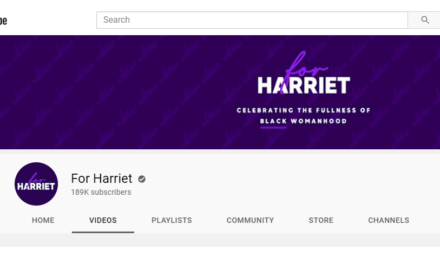
JUNE 27, 2025
Don’t miss the big savings for Content Entrepreneur Expo! Early bird pricing ends MONDAY. Register using code TILT100 to save even more!
Schedule update: The Tilt newsletter is taking off the US July 4th holiday. See you on July 11!
full tilt
How To Start Making Money With a Small Audience
Yay!
You’ve gotten traction with your creator business. Some people consume your content and engage with you online. But the audience is small, and you need “meantime” money to sustain your life and stay in the content business.
What’s an entrepreneur to do? Austin Church, founder of Freelance Cake and author of Free Money: Nine Counterintuitive Moves for Life-Changing Freelance Income, has some ideas.
At the Content Entrepreneur Expo, he suggested every startup business owner do these five things to balance the “meantime” and the content business revenue:
1. Optimize prices on the service side: Right-priced consulting or other services allow you to make more money in less time. You’ll likely use some type of hourly rate for these offers (even project rates will incorporate your hourly rate. You can spend the newly freed-up time on the content side of the business.
2. Calculate your survival rate: Mix personal and business. What do you need to survive, and how much time can you devote to the business? Start with these three figures to ultimately arrive at higher yet realistic hourly rates on which to base your service pricing:
- Survival number: How much does your life cost? Think personal life, business life, and taxes.
- True availability number: How many weeks will you work over the next 12 months? How many hours in an average week? How many hours can I realistically bill? Austin calls this last number your effectiveness rate because you can’t bill for every hour worked.
For example, let’s say you can work 10 hours a week on your content business. Six of those hours go to client work. Four hours are spent on marketing and administration. If your hourly rate for clients is $100, you would earn $600. So, your effectiveness rate would be $60. (The $600 earned from client work is divided by the 10 hours you spent on the business.)
- Survival rate: Your survival number divided by your true availability number equals your survival rate.
3. Dream and actualize bigger: You don’t just want to survive; you want to earn additional money to move toward a lifestyle you really want. So, keep calculating.
- Dream number: What’s the total amount you want to make in a year?
- Dream rate: Divide your dream number by your total available hours to know the dream hourly rate that covers your immediate needs and helps you progress on long-term goals.
- Pessimistic price: Your dream rate exists in a dream world. Account for human nature, such as delays, revisions, communication hiccups, etc. Add up the time for the project. Multiply it by your dream rate. Then, add 20% to account for the inevitable “bad behavior” that will happen.
- Weirdly precise: If your pricing ends in round numbers, turn the zeroes into weirdly precise numbers. So, if it’s $500, charge $575, or make it $10,125 instead of 10K. The incremental increases won’t lose you the client, but they will add up over a year.
Austin says you probably won’t be able to get your dream rate for every project right out of the gate, but you can move closer to it with each new project.
“We’re all better advocating for ourselves when we have an emotional attachment to the outcome. But if the number really was arbitrary, it’s no surprise that our belief in those prices is wobbly,” Austin says.
4. Treat advice as a content product: With your hourly rate determined, pivot to work on your offerings. Sell content products that will return revenue even if your audience is small. Advice works well in many content product forms. For example, you could sell one-off strategy sessions and offer premium one-on-one coaching.
To determine what advice would sell, ask yourself these questions:
- What are my top 10 pieces of content?
- Why did they resonate?
- What are their smaller symptom problems?
- What’s the right order for solving them?
- What are the bigger root problems they need help with? And what’s the transformation?
With those answers, you can create content products that take your audience along that path to transformation. Think about low-, mid-, and premium-price points. And don’t shy away from charging a high price, thinking people won’t spend that much. You may be surprised, as Austin was when he started offering high-ticket content products.
5. Build a funnel: Create a business path to turn the audience into buyers. Here’s a simple way to nurture them to the sale:
- Publish posts about your signature offer.
- Invite people to schedule a discovery call (free “strategy call”).
- Get the yes and send the payment link.
- Downsell to a one-off coaching session.
- Invite them to apply for your premium signature program.
You can also promote your content products by publishing a post about the low-tier product (and pinning it to the top) on social media and in your emails. Add a booking link to your email signature. Email your subscribers about your premium program before you launch it in your newsletter. Get creative.
Helpful Resources:
- 5 Things To Do To Price Your Membership Products
- The Pros and Cons of Publicly Posting Your Rate Sheet
- 6 Pricing Strategies for Online Courses
Want to know more about Austin’s content business, Freelance Cake? Check out this content entrepreneur spotlight.
– Ann Gynn
Meet Austin, grab his book, and learn from him in person at CEX from Aug. 24 to 26. He’ll talk about creating systems for your creator business. Register by Monday for the best savings!
tilt publishing book club
- On the inside … Hear from Kate McKean, who talks book business on Substack and in her new book, Write Through It: An Insider’s Guide to Publishing and the Creative Live. [Publishers Weekly]
- Goodbye dance … ByteDance, owner of TikTok, closes the chapter on its publishing arm, 8th Note Press. [Tech Crunch]
- No bricks … Author sells 1M books without a shelf spot in bookstores. [Financial Review]
- Middle of the night … Should you write when inspiration wakes you up? [Josh Bernoff]
things to know
Money
-
Important distinction: Creators and influencers aren’t interchangeable, according to Deloitte’s CMO Program’s Creator economy in 3D report. Creators generate higher audience engagement, hold larger relevance with niche communities, and drive middle-bottom funnel consumer behavior. Influencers hold broader relevance, generate higher brand visibility and awareness, and drive top-middle funnel consumer behavior. [Deloitte]
Tilt Take: Add that data to your media kit to help potential advertisers and brands recognize the real impact you can have. (Don’t have a media kit yet? Here are some tips to create one.) -
Moving pictures: Spotify wants to give video creators $5K in free ad credits to promote their shows on the platform, according to a promotional slide deck seen by The Ankler. [Podnews]
Tilt Take: Spotify recognizes the value of video content in attracting audiences. Maybe you should, too.
Audiences
-
Go direct: Direct-to-fan models attract 95% of full- and part-time creators surveyed for The Future of the Creator Economy Report 2025, according to [Epidemic Sound]
Tilt Take: Moving from third-party platform dependence to an owned channel with direct audience access makes good business sense.
Tech and Tools
-
’Gram tailor: Instagram introduced a new drop-down menu for users’ custom keyword-based streams. [Social Media Today]
Tilt Take: Helpful tool to easily monitor what people are talking about as it relates to your content tilt.
And Finally
-
Feed the machine: Google confirmed it uses YouTube videos to train its AI tools, including Gemini. Some say that could lead to an intellectual property crisis for creators. [CNBC]
Tilt Take: The peril of publishing on third-party platforms is that your content is often beholden to the owner. Read the user agreements to see how they can take control.
business of content
- The Most Powerful Creator Strategy: Silence (Content, Inc.)
- AI Slop and New York’s Mamdani Win (This Old Marketing)
- Lauren Finally Gets to Talk About Fanfiction (Publish & Prosper)
- Watch a session from CEX 2024: How to Set Strategic Prices to Drive Revenue Even with a Small Audience — Austin Church
Get more of the Full Tilt stories on TheTilt.com.
Know a content creator who’s going full tilt? DM us or email [email protected].
Want to advertise on The Tilt? Go here.
Or email us at [email protected].
Was this email forwarded to you? Get your own sub here.
Copyright ©2025 Lulu Press, Inc. All rights reserved.
Update your preferences | Unsubscribe | PO Box 12018, Durham, NC 27709





